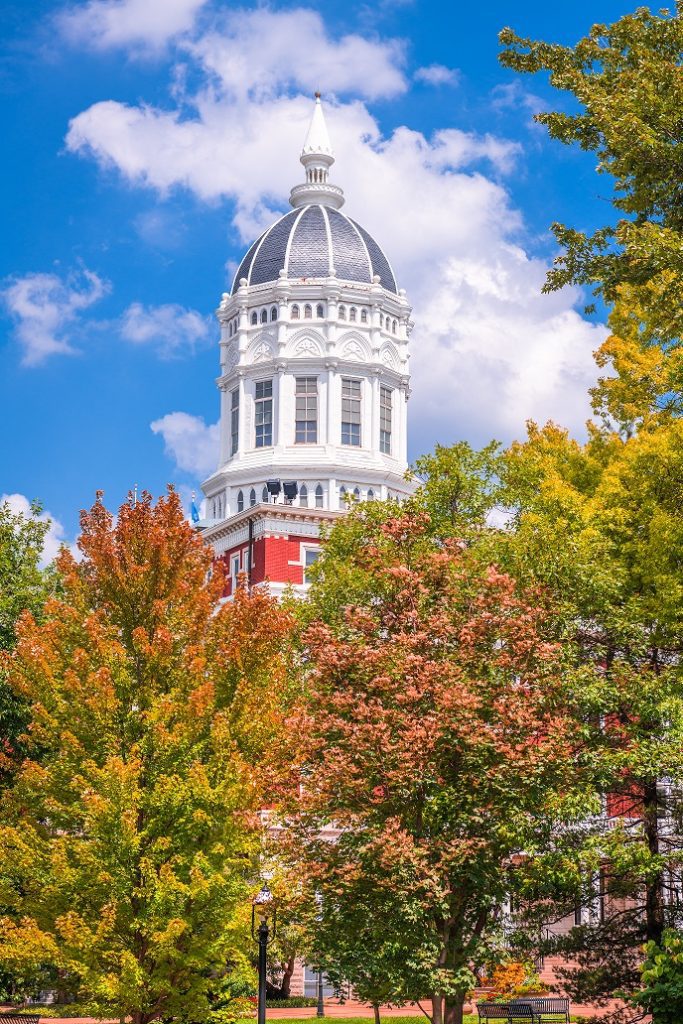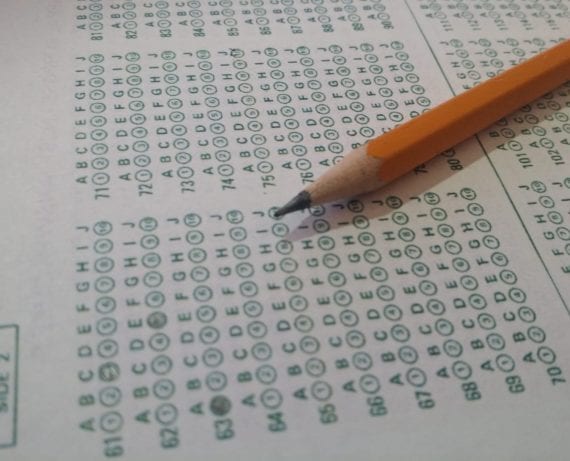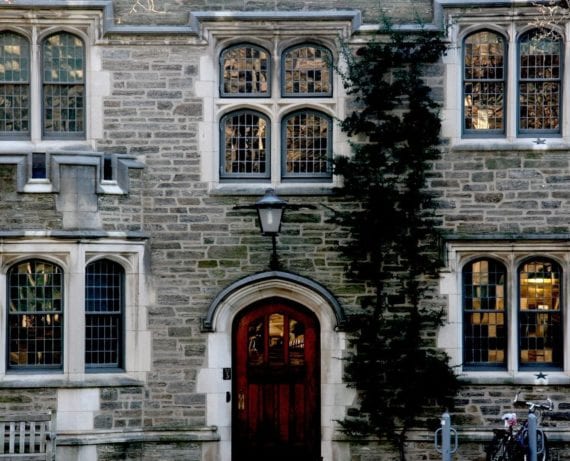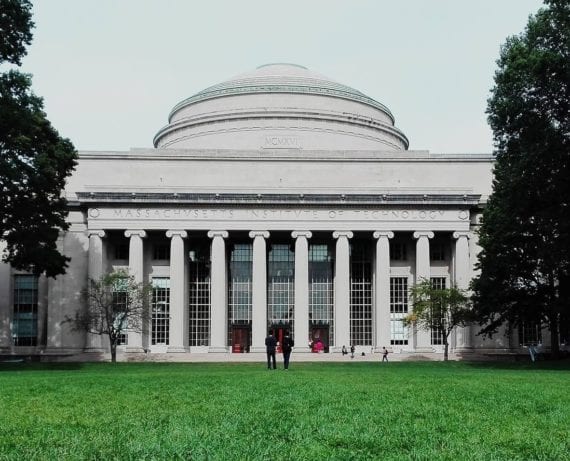The system of education in the USA
The system of education in the US – an overview
The system of education in the USA – The US spends more than any other country in the world on education and each individual state has a major say in the structure of its education system and funds its public institutions.
As a result, there are as many options and types and levels of teaching as there are states, and while schooling is usually mandatory for 12 years, in some part of the US, children can withdraw from formal education as early as the age of 14, as long as their parents consent, or they live more than two miles away from school and have no access to transport, while other states insist children receive formal schooling until they are 16 or even 18.
There are three types of education available : public schools, which are state funded; private, fee-paying institutions which are attended by 10 per cent of the student population; and home-schooling, which is growing in popularity and currently accounts for 1.5 million pupils.
Private education costs between $10,000 and $20,000 a year at school level, and is significantly more expensive when it comes to private, fee-paying universities. Private schools can be faith-based and either for-profit or non-profit.
Since public sector schools rely on local state and federal property taxes to finance their school systems, it is clear that there are bound to be great discrepancies in budgets, with poorer areas receiving less per pupil than richer areas.
Local school boards are elected to decide how the funding is to be spent, and this autonomy also leads to great differences in the curricula and educational priorities.


Most common asked questions:


The system of education in the US – differences
One good example of how approaches to teaching differ widely across the US is the battle between evolution and creationism, which has been tearing the teaching profession apart for decades. Until the 1960s, certain states, such as Tennessee, required science teachers to sign an agreement, stating that they would not teach any Darwinian theories which implied that man evolved from apes, while Alabama simply banned the teaching of evolution. The alternative view, commonly referred to as creationism, or intelligent design, was based on the belief that God created man. At the time of writing, in spite of regular legal challenges, many states still teach both theories concurrently, using intelligent design to criticise evolution, under the guise of making students into critical thinkers.
These states include:
- Colorado
- Kansas
- Iowa
- Montana
- Oklahoma
- Kentucky
- Arizona
- Indiana
- Florida
- Wyoming
- Missouri
- South Carolina
- Mississippi
- New Hampshire
- Consumer Products Consulting.
- Tennessee
- New Mexico
- Louisiana
- Wisconsin
District school boards thus have a great deal of power, as this example shows, and while there is a compulsory common curriculum in the school system, comprising 2-4 years of science, maths, PE and social sciences, the health curriculum – which covers sexual education, anatomy and birth control – is not obligatory, and students or their parents can choose to opt out of these classes.
Over 50 per cent of pupils start their school day by reciting the Pledge of Allegiance, which is why many American films show schoolchildren standing out in the playground in front of the Stars and Stripes before trooping off to class .
The USA system of education – its organisation
The education system in the USA: Academic years run from the beginning of September until early June, and are split into two, three or four terms.
Schooldays can start as early as 7am and many children take school buses , which pick them up and drop them home. Recent estimates calculate that there were 8.8 billion school bus trips made across the US in 2019 – and this does not take into account non-school transit bus journeys.
School hours vary, with the following timetables being the most common -although school boards can decide otherwise, if they need to make sure school buses are factored into opening and closing school hours:
- Elementary schools -7.30-2.30
- Middle/Junior High schools-8.30-3.30
- High Schools 8.15-3.20
Recent legislation has emphasised the importance of ongoing assessment, in line with the No Child Left Behind Act of 2001, which set out to close the gap between advantaged and disadvantaged children, and the updated version, The Every Student Succeeds Act of 2015. Every state in the US is now responsible for setting goals for its own schools and pupils and carrying out annual standardised testing in maths and English, from grades 3-8, and once in high school -with the results having to be posted publically. States have to set out proficiency targets for their elementary and secondary schools and can apply for federal grants to support literacy. These pieces of legislation have shifted power away from the federal government to state level, and highlighted the importance of ensuring underprivileged children receive measurable, high-quality education. Standardised student testing does not, of course, apply to home-schooled pupils or the private sector – which have their own forms of assessment.












The American system of Education – what are charter schools?
The education system in the USA: Charter schools are public schools that emerged from the “small schools movement”, with the first charter being granted in 1991. Unlike other public schools, charter schools operate independently of the local board of education and can be set up by a group of parents, businesses, community leaders, or educators.
The group draws up a charter that contains their mission statement and submits it for approval to the state or a state authority entrusted with assessing applications – which then funds the school on a per-pupil basis.
Charter schools are free of traditional bureaucracy and are held accountable for the academic success of their pupils. Universities frequently support this type of school, which tends to be innovative, inclusive, and diverse.
These schools in the education system in te USA are non-selective and accept pupils on a first-come, first-served basis, or by lottery, and do not charge tuition.
Every charter school is different and follows its own educational philosophy. If a school fails to meet its aims, then the state can withdraw its permission to operate, and the school will be closed.
In 2020, there were approximately 7,000 charter schools in the US, with their own performance contracts, setting out the programs they run, describing how pupils are assessed and how success is measured.
Each charter is normally granted for between three and five years and is then reviewed. These types of schools tend to be urban and small – and there is currently a growing trend for setting up online charter schools.
The American system of Education – what is a magnet school?
Magnet schools are commonly found in large cities and are part of the public education system of the US, and span a number of educational levels, from elementary to middle and high schools.
As the term implies, magnet schools are designed to attract pupils with special interests and gifts from across local district lines.
These schools are mainly selective, and applicants have to pass an entry test and an interview. They focus on a single field: elite sports, commerce, agricultural education, natural sciences, fine or performing arts, etc, offering a specialized curriculum and a broad range of enrichment programs. Class sizes and teacher-pupil ratios tend to be smaller than in mainstream public schools and academic quality and achievement are often higher.
Many magnet schools concentrate on STEM subjects or the arts, and recent research has found that these schools have a positive impact on student outcomes and attendance. In 2021, there were approximately 3,500 magnet schools in the USA.
The US system of education - specialisation or flexibility?
The US system of education offers an incredibly flexible and diverse approach to teaching and learning. Unlike many European countries, where pupils specialize at the age of 16, choosing their field and three or four subjects which they want to concentrate on for the next six years, American students can chop and change their majors and minors, virtually create their own learning path and link quite diverse subjects.
The possibilities are endless in higher education, and even in school, pupils have a huge number of electives to choose from. American education aims to be dynamic, values debate and a diversity of opinions, and only expect its undergraduates to decide on a direction once they have spent one or two years looking at every area and option.
This approach is boosted by the core curriculum, found at every level of the USA system of education.
The structure of the American school system
The structure of the American school system – From the age of 3-5, young children attend pre-kindergarten, which is voluntary, and can either be generalised or specialised. Children tend to learn through play and are prepared for entry into elementary school. Approximately 69 per cent of American children attend pre-kindergarten.
Elementary school lasts for five or six years and whether or not a child gets into a specific school depends on where they live. These schools have a broad curriculum that is set at the state or county level and gives children basic knowledge in mathematics, reading, PE , writing, history and geography, crafts, music, science and gym.
Foreign languages, which used to be taught at high schools, have been introduced in approximately 25% of elementary schools, and schools tend to offer Spanish, Latin, French, Chinese or German. Some elementary schools also provide elective subjects, like computers and technology, music, and art. Children will be introduced to geometry, algebra, charts, and graphs and their reading comprehension will be checked and assessed. Socialisation is as important as academic achievement at this level, since elementary school is preparing its pupils for moving up into middle or junior high school. Children with special learning needs are integrated into the classroom and receive additional support and materials. Pupils do not generally move between classrooms, since the teachers come to them – unless it is for PE or gym classes -and elementary schools provide 20-30 lessons per week.
Middle School/Junior High School
Pupils who enter middle school start at the age of 11, whereas those who go to junior high school start at 12. This difference of one year is mirrored in the next stage of their education, when middle school pupils move on to high school at the age of 14, and junior high school pupils move to senior high school at 15.In spite of these differences in educational divisions, students at this stage of their educational journey are taught a very similar core curriculum, which covers maths, science, social studies, history and English, with many schools offering electives in a huge range of subjects, such as drama, art, music, health education, PE, leadership, orchestra, French cooking, band, computer science and US history. It is important to recognise that the subjects differ vastly from school district to school district and that some middle and junior high schools have very few electives , which reflects the approach of the school, the school district and the state. Pupils can study at basic or advanced level and sit regular tests, to establish their grades.
High School/Senior High School
High school begins at 14 or 15, depending on the type of school pupils are attending , and at this juncture the range of electives expands. This level of schooling prepares pupils for entering university , and normally has the following core subjects: history or geography or world culture; maths; English; natural sciences, art and PE. Students can choose the level at which they wish to study – Honors or Standard level – and can opt to do Advanced Placement courses (AP), either together with, or instead of, the regular curriculum. AP courses are generally very helpful when applying to get into university, with Harvard requiring all its applicants to have taken 7 or more AP options. Grades are calculated on a 4/5 or even 11 point system, with some schools using letters to clarify achievement, and this goes towards calculating overall GPA, or grade point average – which is also important for securing a place in higher education. In order to get a high school diploma, pupils have to accumulate the minimum number of credits required by their particular state. Test results, lab work and participating in projects are all important for the GPA.
Does the US system of education prepare students for the IB diploma?
The IB is particularly popular in the private sector, since this qualification is recognised worldwide -which is not the case for the US high school diploma. Students start preparing for the exam when they are 16 and have to take three subjects at Honors level and three at Standard level. In addition, they need to take a course in the Theory of Knowledge, participate in sports and social work, do independent research and write a 4,000 word paper. The US has 1,800 IB World Schools. IB programmes begin at elementary school level, but it is possible to find a public secondary school which offers the two year,pre-university programme. Home-schooled children are not eligible to sit the IB diploma examinations.


Study in the USA - Flexibility and choice in your degree studies
The US higher education system is considered one of the best in the world, and offers flexible study opportunities at over 4,000 colleges and universities. US degrees are recognized worldwide for their academic excellence and enhanced learning experiences.
The system of education in the US: higher education
GPAs and High School diplomas alone will not get students into an American university. During the pandemic, many institutions of higher education have waived the normal requirement for strong scores in one of two standardised tests – the SAT or the ACT. In addition, there has been a growing swell of opinion which challenges the validity, accuracy and usefulness of standardised testing, and it is possible that, once the pandemic is over, many universities will continue to favour holistic assessments of student applications, and not demand SAT and ACT scores.
The SAT tends to be more mathematically-biased than the ACT, and approximately the same number of American students sit each exam – it is, of course, possible to do both and to choose which score to submit. SAT subject exams have now been dropped, which suggests that taking AP classes at secondary school will assume greater importance in the future.
In line with the overall decentralised nature of the American system of education, institutions of higher education can be private or public, for-profit or non-profit, secular or religiously affiliated (for example with the Jesuits or the Mormons).The choice is very wide, and every individual will find their own niche and best educational fit.
There are three main types of colleges in the USA: colleges which are part of a larger university; community colleges; and liberal arts colleges.
To take one example, Harvard College is part of Harvard University and its many professional schools – such as medical, pharmacy or dental schools – are also university colleges. Courses run for four years to gain a bachelor’s degree , and students can carry on and take a Master‘s or do a Doctorate.
Liberal arts colleges are often private and offer four-year bachelor’s degrees. These colleges are residential, usually have small communities and classes and a low ratio of students to teachers. Some have an experimental approach to teaching and learning and may not follow traditional grading systems.
Teaching is interdisciplinary, and the focus is not on research – as is the case in traditional universities – but acquiring knowledge through an interactive exchange of views and driving intellectual development, rather than preparing students for a vocation or profession. The lack of emphasis on research output results in the majority of the US liberal arts colleges not offering postgraduate degrees.
Education system in the USA - Community Colleges
The American education system – Community colleges were originally set up to fill the labour shortfall of technically proficient white and blue-collar workers.
Students can attend both full-time and part-time and combine their education with work. This makes them particularly attractive to older and less economically advantaged students, who cannot stop working to get an education.
Community colleges are not selective and practise open access. Courses run for two years and lead to an Associate degree.
Many students use the community college as a step up and preparation stage before applying for a four-year university course, by taking advantage of transfer systems.
In this way, they will pay two years of community college fees, and two years of university fees – and make a significant saving. Attending community college is cheap, with tuition fees ranging from $4,000 dollars for in-state students, to $8,500 for out of state students. This compares very favourably with the tuition fees charged by liberal arts colleges and universities.
The American system of education – the importance of extracurricular activities
The system of education in the USA is diverse and all-embracing. Students can choose to take courses at many levels, to mix and match electives and to work to different standards according to their abilities and interests.
Colleges in the US are looking for well-rounded generalists, with drive, intellectual skills and curiosity and they assess students’ potential by looking past the GPA, the test scores and the standardized results. This is where extracurricular activities come in.
These extracurricular activities can be self-funded or financed through parents’ contributions or donations, if they require equipment , uniforms etc – for example, cheerleading, playing in a band, joining a marching band, developing musical, art or drama skills.
Activities such as debating societies, technology, science or language clubs, are often organised by the school, as are athletics and sporting competitions.
Students are encouraged to get involved in voluntary work, community projects, charity fundraising, and diversify their experiences. Film clubs offer the opportunity to make short videos, films or photographic montages, while working on school newspapers or radio stations improves communication skills and makes an impressive contribution to an academic CV.
Many university application forms leave space for extracurriculars or ask specific essay questions on this area of a student’s life since applicants are assessed in relation to what they can offer the college community.
After all, every college is looking for athletes and actors to step into the limelight and improve their teams and competitiveness in inter-varsity sports or contribute to their performing arts programs.
Passion, commitment and enthusiasm are difficult to communicate through test results and scores, and yet they are highly valued within the rich tapestry which makes up the American system of education.
Extracurricular activities are ideal vehicles for demonstrating personality, interests and engagement with communities and the world at large.
The system of education in the US -postgraduate studies
Postgraduate studies can be divided into the academic/research programmes and vocational degrees, diplomas and certificates. The majority of Master’s courses last for two years, although there are a number of shorter programmes available, such as the 12 month MBA. Unlike the system in many European countries, there are no pure research programmes , with students attending lectures and seminars, as well as pursuing their personal research interests. Regular assessments are part of the American approach to Master’s teaching and learning, rather than judging progress purely on the basis of essay and thesis work. Postgraduate students attend specialised “grad” schools and are often housed apart from the undergraduates at their university. The average fees for doing a
Master’s at a public university are between $20,000 and $35,000 per year, with private universities charging significantly higher tuition fees. Nevertheless, cost has proved no obstacle to the million plus international students who have decided to do their postgraduate studies in the USA.
On average, PhDs take four to six years to complete and culminate in submitting an original dissertation. Advanced professional degrees in medicine, law, theology,dentistry, journalism, architecture and engineering etc are offered by professional graduate schools.
The system of education in the USA – a summary
The system of education in the USA is as varied, vast and inclusive as its geography. Given the number of options available to each student, learning paths are totally different across the population, and students have many choices to make on their educational journey. Although on paper costs can seem prohibitive, the US federal government offers generous grants and loans to its citizens, which take into account family income and expenses.
In addition, some of the great US universities have chosen to become need-blind in their admissions processes, and cover the entire cost of a student’s expenses, if they are offered a place. At the other end of the spectrum, community colleges provide opportunities for ongoing, lifelong education to everyone, irrespective of age, socioeconomic background and qualifications. There is a great deal to admire in the US system of education and it is not surprising that its schools, colleges and universities rank so highly in global listings.
Study in the US with Elab




















